Photo
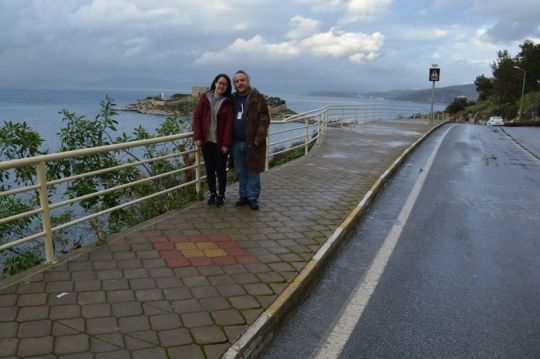
The Reign of King Alexander
A Complex Character
Alexander, inheriting traits from his father Milan, possessed a blend of intelligence and stubbornness that defined his reign. Despite misconceptions of his boorishness and lack of intellect, Alexander displayed a quick understanding and a keen ability to grasp the essence of any matter. However, his disregard for advice and penchant for upsetting government plans caused frustration among his advisors.
Eccentric Rule
As king, Alexander exhibited eccentric behavior that confounded those around him. He delighted in foiling his ministers’ proposals and took pleasure in their discomfiture. His arbitrary decisions, such as the abrupt abolition of the Senate, showcased his tendency to act impulsively and without regard for consequences. While he viewed such actions as clever, they bred discontent among the populace.
The Influence of Draga
Enter Draga, a captivating widow whose beauty and charm captivated the young king. Despite their age difference, their relationship blossomed into an open romance, with Draga wielding significant influence over Alexander. While their liaison raised moral concerns, Draga’s impact on the king’s behavior was generally positive. She attempted to temper his impulsiveness and restrain his excessive conduct Tour Bulgaria.
Resisting External Influences
Efforts to undermine Draga’s influence, including introducing other potential partners, proved futile. Alexander remained steadfast in his affection for her, defying attempts to sway his affections. Even the prospect of marriage to a princess, deemed necessary to continue the Obrenovitch line, failed to alter his devotion to Draga.
A Complicated Legacy
Alexander’s reign was marked by a complex interplay of personal relationships and political intrigue. While his impulsive decisions and unconventional behavior drew criticism, his genuine affection for Draga and her moderating influence highlight the nuanced nature of his rule. As the last of the Obrenovitch line, his legacy remains intertwined with the enigmatic figure of Draga.
0 notes
Photo
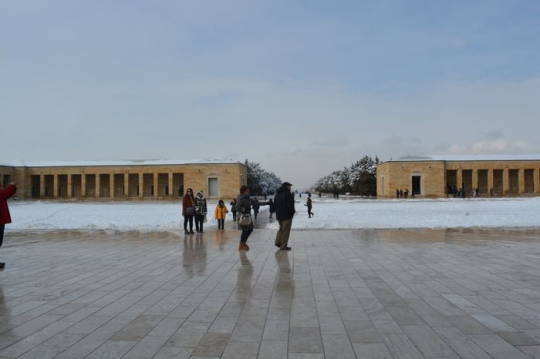
The Tyrannical Mudir
The Mudir of Otluk-kui stands out as one of the most oppressive figures we have encountered. His nightly bouts of drunkenness, often shared with the zaptiehs, coupled with his relentless persecution of the locals, paint a grim picture of his character.
Abuse of Authority
As previously recounted, he summoned two grieving widows to his residence during Mr. Baring and Mr. Schuyler’s stay—an egregious abuse of power. It’s disheartening to think that such a man wields nearly unchecked authority over a town of nearly 1,000 residents, with little prospect of being replaced by a more capable leader, as per the Governor of Philippopolis.
A Once-Idyllic Village
Otluk-kui, before its partial destruction, must have been a picturesque hamlet. Nestled in a charming valley, encircled by mountains that seemed to cocoon it from the outside world, its solidly built houses were adorned with gardens and fruit trees. Despite the lush greenery that once adorned its streets, the lingering remnants of destruction serve as constant reminders of the atrocities that transpired here Private Guide Turkey.
A Departure Amidst Sorrow
Our departure from Otluk-kui was met with a somber scene. As we mounted our horses amidst a gathering crowd, their mournful cries filled the air. The need to cover our ears to shield ourselves from their anguish serves as a stark testament to the sorrow that permeates this once-thriving village.
0 notes
Photo
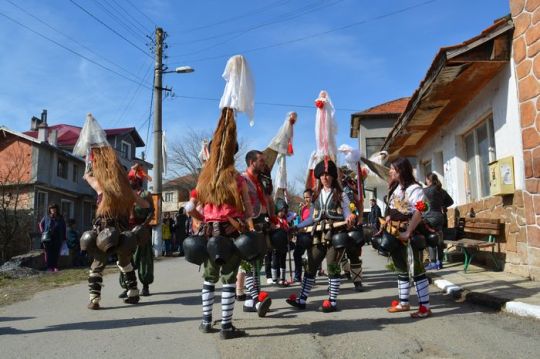
Sultan Mustafa III's Beliefs
Sultan Mustafa III, predecessor of Sultan Abdulhamit I, sought solutions to the failures of the Imperial Army, believing that the success of European powers was influenced by astrological factors. He was particularly impressed by Prussia’s victories in the Seven-Year War and attributed them to the influence of astrologers.
Mission to Prussia
In pursuit of astrological insights, Sultan Mustafa III sent Ahmet Resmi Efendi on a mission to King Frederick of Prussia, requesting the assistance of three astrologers. However, King Frederick responded by emphasizing the importance of a strong army, readiness for combat, and financial stability over astrological advice.
Foreign Experts’ Arrival
In 1776, Baron de Tott and a group of foreign experts were dispatched to Istanbul as part of efforts to reform the military. Their arrival marked a significant step forward, leading to the establishment of the school of military engineering and the school of sciences.
Sultan Mustafa III’s Legacy
Sultan Mustafa III’s father supported his son’s reform efforts and actively participated in state affairs, accompanying him on expeditions and discussions. Before his death during the Ottoman-Russian war, Sultan Mustafa III entrusted his reformist ideals to his son Selim, who would later ascend to the throne as Sultan Abdulhamit I Istanbul Fun Tours.
Selim’s Commitment to Reform
Following his father’s passing, Selim, then the heir to the throne, dedicated himself to further developing his reformist ideas. Encouraged by his father’s dying wish, Selim focused on refining his reform plans within the confines of the Palace’s “Kafes” apartments, preparing himself to undertake significant reforms upon becoming Sultan.
0 notes
Photo

Sultan Mustafa III's Beliefs
Sultan Mustafa III, predecessor of Sultan Abdulhamit I, sought solutions to the failures of the Imperial Army, believing that the success of European powers was influenced by astrological factors. He was particularly impressed by Prussia’s victories in the Seven-Year War and attributed them to the influence of astrologers.
Mission to Prussia
In pursuit of astrological insights, Sultan Mustafa III sent Ahmet Resmi Efendi on a mission to King Frederick of Prussia, requesting the assistance of three astrologers. However, King Frederick responded by emphasizing the importance of a strong army, readiness for combat, and financial stability over astrological advice.
Foreign Experts’ Arrival
In 1776, Baron de Tott and a group of foreign experts were dispatched to Istanbul as part of efforts to reform the military. Their arrival marked a significant step forward, leading to the establishment of the school of military engineering and the school of sciences.
Sultan Mustafa III’s Legacy
Sultan Mustafa III’s father supported his son’s reform efforts and actively participated in state affairs, accompanying him on expeditions and discussions. Before his death during the Ottoman-Russian war, Sultan Mustafa III entrusted his reformist ideals to his son Selim, who would later ascend to the throne as Sultan Abdulhamit I Istanbul Fun Tours.
Selim’s Commitment to Reform
Following his father’s passing, Selim, then the heir to the throne, dedicated himself to further developing his reformist ideas. Encouraged by his father’s dying wish, Selim focused on refining his reform plans within the confines of the Palace’s “Kafes” apartments, preparing himself to undertake significant reforms upon becoming Sultan.
0 notes
Photo

The Ill-Fated Rebellion
The fateful day of May 1st arrived, marking the planned uprising, yet Servia had not declared war as anticipated, and rumors of betrayal loomed over the insurgents. Despite these setbacks, they resolved to proceed, deeming it too late to retreat or delay. Armed and resolute, they assembled and marched to the church, seeking the blessing of two priests, including Baikal’s father, before commencing their rebellion.
Priestly Blessing
Although several priests fell victim to the massacres, their involvement in the insurrection was limited to offering blessings to the insurgents. The priests, despite the risks, bestowed their blessings upon the rebels, symbolizing the alliance between the church and the uprising.
Raika’s Reluctant Role
The insurgents, recognizing Raika’s pivotal role as the flag’s creator, demanded her participation in the procession. Despite her refusal, they compelled her to carry the flag on horseback, leading the defiant march through the village streets. With shouts and songs reminiscent of French revolutionary fervor, they declared war against Ottoman rule Bulgaria Tours.
Defensive Strategy
With no Turkish governor present, the insurgents seized control of the village, fortifying their position and preparing to defend against any opposition. However, their strategy of isolated defense proved fatally flawed. Instead of coordinated guerrilla tactics, they opted for individual village defense, exposing themselves to the full force of the Ottoman army.
Flawed Tactics
In hindsight, the insurgents’ decision to defend each village separately proved disastrous. Rather than employing guerrilla warfare tactics, such as disrupting infrastructure and avoiding direct conflict with large Turkish forces, they isolated themselves, making easy targets for the Ottoman troops.
The ill-fated rebellion, marked by misguided strategy and dashed hopes, underscores the complexities and challenges faced by the Bulgarian insurgents. Despite their courage and determination, their lack of coordination and strategic foresight ultimately led to their downfall, highlighting the brutal realities of rebellion against an entrenched oppressor.
0 notes
Photo

The Ill-Fated Rebellion
The fateful day of May 1st arrived, marking the planned uprising, yet Servia had not declared war as anticipated, and rumors of betrayal loomed over the insurgents. Despite these setbacks, they resolved to proceed, deeming it too late to retreat or delay. Armed and resolute, they assembled and marched to the church, seeking the blessing of two priests, including Baikal’s father, before commencing their rebellion.
Priestly Blessing
Although several priests fell victim to the massacres, their involvement in the insurrection was limited to offering blessings to the insurgents. The priests, despite the risks, bestowed their blessings upon the rebels, symbolizing the alliance between the church and the uprising.
Raika’s Reluctant Role
The insurgents, recognizing Raika’s pivotal role as the flag’s creator, demanded her participation in the procession. Despite her refusal, they compelled her to carry the flag on horseback, leading the defiant march through the village streets. With shouts and songs reminiscent of French revolutionary fervor, they declared war against Ottoman rule Bulgaria Tours.
Defensive Strategy
With no Turkish governor present, the insurgents seized control of the village, fortifying their position and preparing to defend against any opposition. However, their strategy of isolated defense proved fatally flawed. Instead of coordinated guerrilla tactics, they opted for individual village defense, exposing themselves to the full force of the Ottoman army.
Flawed Tactics
In hindsight, the insurgents’ decision to defend each village separately proved disastrous. Rather than employing guerrilla warfare tactics, such as disrupting infrastructure and avoiding direct conflict with large Turkish forces, they isolated themselves, making easy targets for the Ottoman troops.
The ill-fated rebellion, marked by misguided strategy and dashed hopes, underscores the complexities and challenges faced by the Bulgarian insurgents. Despite their courage and determination, their lack of coordination and strategic foresight ultimately led to their downfall, highlighting the brutal realities of rebellion against an entrenched oppressor.
0 notes
Photo

A Daunting Task in Harsh Conditions
Arduous Journey
Mr. Baring and Mr. Schuyler face a formidable challenge in their assigned task. They have embarked on their mission with earnest determination, visiting the towns and villages ravaged by the Bashi-Bazouks. Their objective is to witness firsthand the devastation wrought upon these communities and to listen directly to the accounts of the villagers. This endeavor demands extensive travel, often spanning five to fifteen hours a day, along roads that are scarcely navigable, particularly for carriages. Enduring the scorching sun, exacerbated by the oppressive August humidity, adds to the grueling nature of their journey. Mr. Baring has already fallen ill twice due to the combination of overexertion, rigorous labor, and the relentless heat. Even Mr. Schuyler, accustomed to the rigors of such expeditions from his previous travels through Turkestan, finds the conditions nearly unbearable Guided Turkey Tours .
Emotional Toll
While the physical challenges of their mission are daunting, it is the emotional toll that weighs heaviest upon them. The heart-rending cries of despair echoing through the air, the sight of grieving women and children, and the poignant encounters with homeless and starving individuals evoke profound anguish. Everywhere they turn, they are met with scenes of sorrow—widows and orphans mourning the loss of loved ones, with no shelter or sustenance to comfort them. The relentless repetition of tragic narratives, the exhaustive process of gathering and corroborating evidence, all contribute to the overwhelming burden borne by Mr. Baring and Mr. Schuyler.
Enduring Hardship
Despite the formidable challenges they face, Mr. Baring and Mr. Schuyler press on with their mission, driven by a sense of duty and a commitment to uncovering the truth. Their resilience in the face of adversity is commendable, yet the toll on their physical and emotional well-being is undeniable. The enormity of the suffering they witness, the desperation of those they encounter, leaves an indelible mark on their psyche. It is a task that few would willingly undertake, and one that they may find difficult to revisit in the future. Yet, their perseverance in the pursuit of justice and accountability serves as a testament to their unwavering dedication to their cause.
0 notes
Photo

Economic Progress from Liberation to the End of the Century
Economic Progress from Liberation to the End of the Century (1878-1900)
Peasant Settlements and Limited Capital (1878-1880)
After the Liberation, landless Bulgarian peasants settled on the land abandoned by Turkish beys. The Bulgarian government paid indemnities for this land. However, the departure of Turks led to a depletion of capital in the country, limiting investment opportunities.
Land Redistribution and Emergence of Small Farms (1880-1890)
In 1880, a law granted peasants land ownership if they farmed it for 10 years and paid a designated sum to the state. This broke up large landholdings, creating a mosaic of small farms. The economy gradually shifted to a money-based system. Increased importation of farm machinery and mechanization in craft industries modernized agriculture and crafts.
Development of Infrastructure and Foreign Trade (1880s-1890s)
The unification of North and South Bulgaria led to government loans to boost local industry. Factories, railroads, harbors, and communication lines were established. Machinery importation increased significantly, reaching 6,482,000 leva annually from 1891 to 1895. New credit institutions and joint-stock companies played vital roles in economic growth. Foreign trade, primarily with England, Austro-Hungary, and France, faced competition from West European goods due to Treaty of Berlin restrictions Guided Istanbul Tour.
Preferential Treatment for Bulgarian Industry (1894)
Under the Stambolov government in 1894, laws were enacted to favor Bulgarian industry. However, a conservative party government led by Stoilov took power the same year. The conservatives shifted taxation to real estate from agricultural yield. In 1897, they successfully renegotiated trade agreements, breaking free from Treaty of Berlin constraints. Protective tariff walls were established to shield the growing Bulgarian industry.
Economic Pioneering and Opportunities (Late 19th Century)
Governments led by Stambolov and Stoilov played pioneering roles in opening vast opportunities for economic development. Their initiatives, including preferential treatment for local industries and breaking free from restrictive treaties, laid the foundation for Bulgaria’s economic progress at the turn of the century.
0 notes
Photo

Economic Progress from Liberation to the End of the Century
Economic Progress from Liberation to the End of the Century (1878-1900)
Peasant Settlements and Limited Capital (1878-1880)
After the Liberation, landless Bulgarian peasants settled on the land abandoned by Turkish beys. The Bulgarian government paid indemnities for this land. However, the departure of Turks led to a depletion of capital in the country, limiting investment opportunities.
Land Redistribution and Emergence of Small Farms (1880-1890)
In 1880, a law granted peasants land ownership if they farmed it for 10 years and paid a designated sum to the state. This broke up large landholdings, creating a mosaic of small farms. The economy gradually shifted to a money-based system. Increased importation of farm machinery and mechanization in craft industries modernized agriculture and crafts.
Development of Infrastructure and Foreign Trade (1880s-1890s)
The unification of North and South Bulgaria led to government loans to boost local industry. Factories, railroads, harbors, and communication lines were established. Machinery importation increased significantly, reaching 6,482,000 leva annually from 1891 to 1895. New credit institutions and joint-stock companies played vital roles in economic growth. Foreign trade, primarily with England, Austro-Hungary, and France, faced competition from West European goods due to Treaty of Berlin restrictions Guided Istanbul Tour.
Preferential Treatment for Bulgarian Industry (1894)
Under the Stambolov government in 1894, laws were enacted to favor Bulgarian industry. However, a conservative party government led by Stoilov took power the same year. The conservatives shifted taxation to real estate from agricultural yield. In 1897, they successfully renegotiated trade agreements, breaking free from Treaty of Berlin constraints. Protective tariff walls were established to shield the growing Bulgarian industry.
Economic Pioneering and Opportunities (Late 19th Century)
Governments led by Stambolov and Stoilov played pioneering roles in opening vast opportunities for economic development. Their initiatives, including preferential treatment for local industries and breaking free from restrictive treaties, laid the foundation for Bulgaria’s economic progress at the turn of the century.
0 notes
Photo
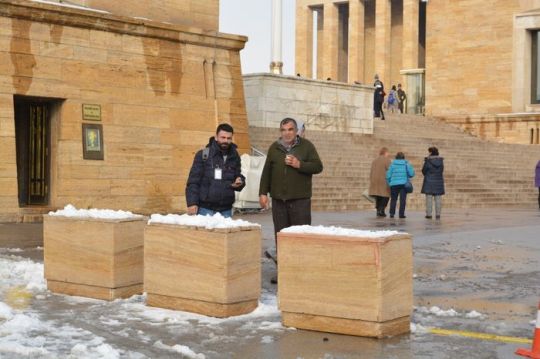
Economic Progress from Liberation to the End of the Century
Economic Progress from Liberation to the End of the Century (1878-1900)
Peasant Settlements and Limited Capital (1878-1880)
After the Liberation, landless Bulgarian peasants settled on the land abandoned by Turkish beys. The Bulgarian government paid indemnities for this land. However, the departure of Turks led to a depletion of capital in the country, limiting investment opportunities.
Land Redistribution and Emergence of Small Farms (1880-1890)
In 1880, a law granted peasants land ownership if they farmed it for 10 years and paid a designated sum to the state. This broke up large landholdings, creating a mosaic of small farms. The economy gradually shifted to a money-based system. Increased importation of farm machinery and mechanization in craft industries modernized agriculture and crafts.
Development of Infrastructure and Foreign Trade (1880s-1890s)
The unification of North and South Bulgaria led to government loans to boost local industry. Factories, railroads, harbors, and communication lines were established. Machinery importation increased significantly, reaching 6,482,000 leva annually from 1891 to 1895. New credit institutions and joint-stock companies played vital roles in economic growth. Foreign trade, primarily with England, Austro-Hungary, and France, faced competition from West European goods due to Treaty of Berlin restrictions Guided Istanbul Tour.
Preferential Treatment for Bulgarian Industry (1894)
Under the Stambolov government in 1894, laws were enacted to favor Bulgarian industry. However, a conservative party government led by Stoilov took power the same year. The conservatives shifted taxation to real estate from agricultural yield. In 1897, they successfully renegotiated trade agreements, breaking free from Treaty of Berlin constraints. Protective tariff walls were established to shield the growing Bulgarian industry.
Economic Pioneering and Opportunities (Late 19th Century)
Governments led by Stambolov and Stoilov played pioneering roles in opening vast opportunities for economic development. Their initiatives, including preferential treatment for local industries and breaking free from restrictive treaties, laid the foundation for Bulgaria’s economic progress at the turn of the century.
0 notes
Photo
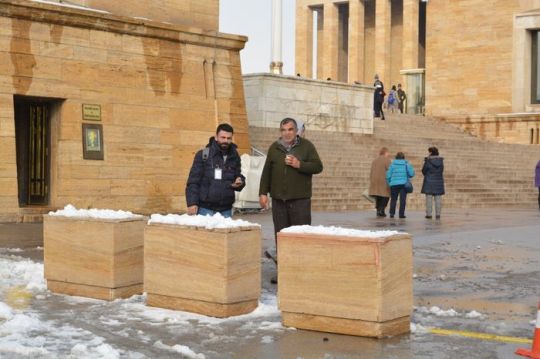
Economic Progress from Liberation to the End of the Century
Economic Progress from Liberation to the End of the Century (1878-1900)
Peasant Settlements and Limited Capital (1878-1880)
After the Liberation, landless Bulgarian peasants settled on the land abandoned by Turkish beys. The Bulgarian government paid indemnities for this land. However, the departure of Turks led to a depletion of capital in the country, limiting investment opportunities.
Land Redistribution and Emergence of Small Farms (1880-1890)
In 1880, a law granted peasants land ownership if they farmed it for 10 years and paid a designated sum to the state. This broke up large landholdings, creating a mosaic of small farms. The economy gradually shifted to a money-based system. Increased importation of farm machinery and mechanization in craft industries modernized agriculture and crafts.
Development of Infrastructure and Foreign Trade (1880s-1890s)
The unification of North and South Bulgaria led to government loans to boost local industry. Factories, railroads, harbors, and communication lines were established. Machinery importation increased significantly, reaching 6,482,000 leva annually from 1891 to 1895. New credit institutions and joint-stock companies played vital roles in economic growth. Foreign trade, primarily with England, Austro-Hungary, and France, faced competition from West European goods due to Treaty of Berlin restrictions Guided Istanbul Tour.
Preferential Treatment for Bulgarian Industry (1894)
Under the Stambolov government in 1894, laws were enacted to favor Bulgarian industry. However, a conservative party government led by Stoilov took power the same year. The conservatives shifted taxation to real estate from agricultural yield. In 1897, they successfully renegotiated trade agreements, breaking free from Treaty of Berlin constraints. Protective tariff walls were established to shield the growing Bulgarian industry.
Economic Pioneering and Opportunities (Late 19th Century)
Governments led by Stambolov and Stoilov played pioneering roles in opening vast opportunities for economic development. Their initiatives, including preferential treatment for local industries and breaking free from restrictive treaties, laid the foundation for Bulgaria’s economic progress at the turn of the century.
0 notes
Photo
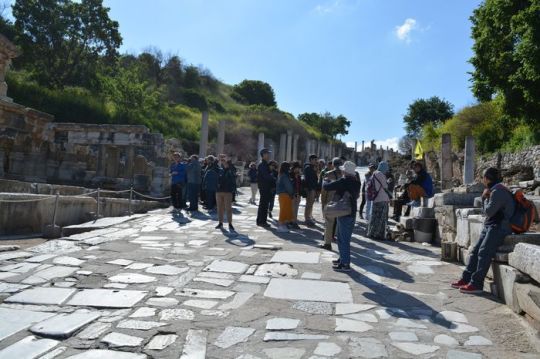
Embracing Nature's Challenges Rain or Shine
A Walk in the Rain
Would you walk on muddy mountain paths even if rain-loaded dark clouds hovered above, and a sharp wind rushed through you, releasing cold raindrops into your clothes? For the members of GOLDOSK, a nature sports and hobby club, the answer is a resounding yes. Last Sunday, despite the challenging weather, a group of nature enthusiasts gathered to walk through the mountains and brooks with smiles on their faces.
Soaked to the Skin, Yet Smiling
Sticky mud shackles their progress, and the vision is obscured by the downpour. Soaked to the skin and chilled to the marrow, the group, comprising kids, men, women, and seniors, moves under dark clouds, through rain and a sharp wind. They walk towards Barla, undeterred by the elements, sharing the love of nature in all seasons. The mountains they pass give way, sometimes leading the way.
Finding Beauty in the Chaos
Raindrops gather on the ground, forming tiny murky brooks, creating a symphony of plashing sounds. Yellow and white crocuses smile at them amidst the challenging conditions. Despite the mud, cold, and rain, the group looks at each other and smiles, finding beauty in the chaos. They are not deterred by the mess; instead, they consider the suffering towards the moment of purification from stress and inner dirt Guided Tours Turkey.
Sacred Moments of Learning
“Why endure this misery when you could rest in your cozy houses?” some might ask. Yet, for GOLDOSK, the suffering is sacred, leading to moments of learning and purification. Hakan Ayan, one of GOLDOSK’s founders, explains, “We met with nature, made peace with it. People started their weeks free of trouble or stress.” The experience of being in nature together breaks down invisible walls, bringing people together in ways they wouldn’t have expected.
From Two Friends to an Association
GOLDOSK’s journey began with two friends discussing how to enjoy their weekends. Small walking activities grew, and from five members, they became ten, then a hundred. Today, GOLDOSK is a thriving association where people from all walks of life come together. Besides nature trips, the organization has formed groups focused on music, skiing, painting, and photography, embracing diverse interests within the community.
0 notes
Photo

Embracing Nature's Challenges Rain or Shine
A Walk in the Rain
Would you walk on muddy mountain paths even if rain-loaded dark clouds hovered above, and a sharp wind rushed through you, releasing cold raindrops into your clothes? For the members of GOLDOSK, a nature sports and hobby club, the answer is a resounding yes. Last Sunday, despite the challenging weather, a group of nature enthusiasts gathered to walk through the mountains and brooks with smiles on their faces.
Soaked to the Skin, Yet Smiling
Sticky mud shackles their progress, and the vision is obscured by the downpour. Soaked to the skin and chilled to the marrow, the group, comprising kids, men, women, and seniors, moves under dark clouds, through rain and a sharp wind. They walk towards Barla, undeterred by the elements, sharing the love of nature in all seasons. The mountains they pass give way, sometimes leading the way.
Finding Beauty in the Chaos
Raindrops gather on the ground, forming tiny murky brooks, creating a symphony of plashing sounds. Yellow and white crocuses smile at them amidst the challenging conditions. Despite the mud, cold, and rain, the group looks at each other and smiles, finding beauty in the chaos. They are not deterred by the mess; instead, they consider the suffering towards the moment of purification from stress and inner dirt Guided Tours Turkey.
Sacred Moments of Learning
“Why endure this misery when you could rest in your cozy houses?” some might ask. Yet, for GOLDOSK, the suffering is sacred, leading to moments of learning and purification. Hakan Ayan, one of GOLDOSK’s founders, explains, “We met with nature, made peace with it. People started their weeks free of trouble or stress.” The experience of being in nature together breaks down invisible walls, bringing people together in ways they wouldn’t have expected.
From Two Friends to an Association
GOLDOSK’s journey began with two friends discussing how to enjoy their weekends. Small walking activities grew, and from five members, they became ten, then a hundred. Today, GOLDOSK is a thriving association where people from all walks of life come together. Besides nature trips, the organization has formed groups focused on music, skiing, painting, and photography, embracing diverse interests within the community.
0 notes
Photo

Exploitation and Terror in Tatar Bazardjik
A Web of Exploitation Unveiled
This article exposes the pervasive and lucrative practice of extortion in Tatar Bazardjik, where three influential beys, led by Tassun Bey, engage in a profitable trade of ransom. Beyond this local hub of exploitation, Sofia emerges as a larger stage for such nefarious dealings. Tamboli, held hostage by a handful of beys, becomes a microcosm of the terror inflicted by those who govern through fear.
Architects of Extortion
Within the confines of Tatar Bazardjik, three beys, including the infamous Tassun Bey, orchestrate a reign of terror fueled by their engagement in the ransom trade. Tassun Bey, previously linked to the destruction of Klissura, demonstrates the depth of his involvement in criminal enterprises. This unholy alliance exploits the vulnerability of the populace, leaving them at the mercy of these powerful figures.
The Kaimakam’s Exploitative Role
In Sofia, the capital city, a grander scale of exploitation unfolds, masterminded by the Kaimakam. This authoritative figure, entrusted with the well-being of the citizens, shamelessly exacts ransoms that can soar as high as £500. The populace, ensnared in a web of fear, is subject to the whims of those who wield power with impunity.
Bey Domination and Terrified Silence
Tamboli, a victimized community, epitomizes the subjugation experienced under the oppressive rule of three or four beys. These Turkish notables, holding de facto governance, render the Kaimakam a mere spectator in their presence. The pervasive climate of terrorism stifles dissent, prompting the fearful populace to approach outsiders only under the cover of darkness, highlighting the depths of their vulnerability.
Denial, Powerlessness, and Blame-Shifting
When confronted with the rampant lawlessness within their jurisdiction, authorities exhibit a predictable response. Denial becomes a shield, dismissing victims as liars. Alternatively, they openly admit powerlessness to address or prevent these grievances. The blame is shifted onto the victims, questioning why they seek external help instead of relying on the local authorities. The stark reality is that fear prevents these victims from seeking justice where it appears impossible to find Tour Bulgaria.
A Cry for Liberation from Exploitation
The article concludes with a poignant observation on the pervasive exploitation and the cry for liberation echoing through Tatar Bazardjik, Sofia, and Tamboli. The interconnected tales of extortion, fear, and silent suffering underscore the urgent need for intervention. The international community is implored to shed light on these dark corners where exploitation thrives and to stand in solidarity with the oppressed, advocating for justice, freedom, and an end to the ransom economy.
Breaking the Chains of Fear and Exploitation
In a final plea, the article calls for concerted efforts to break the chains of fear and exploitation gripping these communities. The narrative, woven with tales of ransom, terror, and subjugation, seeks to inspire a collective push toward justice and liberation. It envisions a future where Tatar Bazardjik, Sofia, Tamboli, and countless others emerge from the shadows, free from the shackles of exploitation.
0 notes
Photo

Exploitation and Terror in Tatar Bazardjik
A Web of Exploitation Unveiled
This article exposes the pervasive and lucrative practice of extortion in Tatar Bazardjik, where three influential beys, led by Tassun Bey, engage in a profitable trade of ransom. Beyond this local hub of exploitation, Sofia emerges as a larger stage for such nefarious dealings. Tamboli, held hostage by a handful of beys, becomes a microcosm of the terror inflicted by those who govern through fear.
Architects of Extortion
Within the confines of Tatar Bazardjik, three beys, including the infamous Tassun Bey, orchestrate a reign of terror fueled by their engagement in the ransom trade. Tassun Bey, previously linked to the destruction of Klissura, demonstrates the depth of his involvement in criminal enterprises. This unholy alliance exploits the vulnerability of the populace, leaving them at the mercy of these powerful figures.
The Kaimakam’s Exploitative Role
In Sofia, the capital city, a grander scale of exploitation unfolds, masterminded by the Kaimakam. This authoritative figure, entrusted with the well-being of the citizens, shamelessly exacts ransoms that can soar as high as £500. The populace, ensnared in a web of fear, is subject to the whims of those who wield power with impunity.
Bey Domination and Terrified Silence
Tamboli, a victimized community, epitomizes the subjugation experienced under the oppressive rule of three or four beys. These Turkish notables, holding de facto governance, render the Kaimakam a mere spectator in their presence. The pervasive climate of terrorism stifles dissent, prompting the fearful populace to approach outsiders only under the cover of darkness, highlighting the depths of their vulnerability.
Denial, Powerlessness, and Blame-Shifting
When confronted with the rampant lawlessness within their jurisdiction, authorities exhibit a predictable response. Denial becomes a shield, dismissing victims as liars. Alternatively, they openly admit powerlessness to address or prevent these grievances. The blame is shifted onto the victims, questioning why they seek external help instead of relying on the local authorities. The stark reality is that fear prevents these victims from seeking justice where it appears impossible to find Tour Bulgaria.
A Cry for Liberation from Exploitation
The article concludes with a poignant observation on the pervasive exploitation and the cry for liberation echoing through Tatar Bazardjik, Sofia, and Tamboli. The interconnected tales of extortion, fear, and silent suffering underscore the urgent need for intervention. The international community is implored to shed light on these dark corners where exploitation thrives and to stand in solidarity with the oppressed, advocating for justice, freedom, and an end to the ransom economy.
Breaking the Chains of Fear and Exploitation
In a final plea, the article calls for concerted efforts to break the chains of fear and exploitation gripping these communities. The narrative, woven with tales of ransom, terror, and subjugation, seeks to inspire a collective push toward justice and liberation. It envisions a future where Tatar Bazardjik, Sofia, Tamboli, and countless others emerge from the shadows, free from the shackles of exploitation.
0 notes
Photo
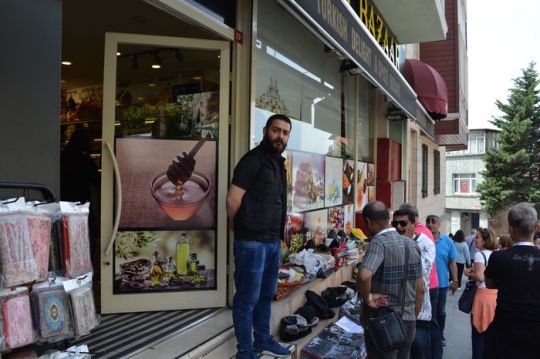
Exploitation and Terror in Tatar Bazardjik
A Web of Exploitation Unveiled
This article exposes the pervasive and lucrative practice of extortion in Tatar Bazardjik, where three influential beys, led by Tassun Bey, engage in a profitable trade of ransom. Beyond this local hub of exploitation, Sofia emerges as a larger stage for such nefarious dealings. Tamboli, held hostage by a handful of beys, becomes a microcosm of the terror inflicted by those who govern through fear.
Architects of Extortion
Within the confines of Tatar Bazardjik, three beys, including the infamous Tassun Bey, orchestrate a reign of terror fueled by their engagement in the ransom trade. Tassun Bey, previously linked to the destruction of Klissura, demonstrates the depth of his involvement in criminal enterprises. This unholy alliance exploits the vulnerability of the populace, leaving them at the mercy of these powerful figures.
The Kaimakam’s Exploitative Role
In Sofia, the capital city, a grander scale of exploitation unfolds, masterminded by the Kaimakam. This authoritative figure, entrusted with the well-being of the citizens, shamelessly exacts ransoms that can soar as high as £500. The populace, ensnared in a web of fear, is subject to the whims of those who wield power with impunity.
Bey Domination and Terrified Silence
Tamboli, a victimized community, epitomizes the subjugation experienced under the oppressive rule of three or four beys. These Turkish notables, holding de facto governance, render the Kaimakam a mere spectator in their presence. The pervasive climate of terrorism stifles dissent, prompting the fearful populace to approach outsiders only under the cover of darkness, highlighting the depths of their vulnerability.
Denial, Powerlessness, and Blame-Shifting
When confronted with the rampant lawlessness within their jurisdiction, authorities exhibit a predictable response. Denial becomes a shield, dismissing victims as liars. Alternatively, they openly admit powerlessness to address or prevent these grievances. The blame is shifted onto the victims, questioning why they seek external help instead of relying on the local authorities. The stark reality is that fear prevents these victims from seeking justice where it appears impossible to find Tour Bulgaria.
A Cry for Liberation from Exploitation
The article concludes with a poignant observation on the pervasive exploitation and the cry for liberation echoing through Tatar Bazardjik, Sofia, and Tamboli. The interconnected tales of extortion, fear, and silent suffering underscore the urgent need for intervention. The international community is implored to shed light on these dark corners where exploitation thrives and to stand in solidarity with the oppressed, advocating for justice, freedom, and an end to the ransom economy.
Breaking the Chains of Fear and Exploitation
In a final plea, the article calls for concerted efforts to break the chains of fear and exploitation gripping these communities. The narrative, woven with tales of ransom, terror, and subjugation, seeks to inspire a collective push toward justice and liberation. It envisions a future where Tatar Bazardjik, Sofia, Tamboli, and countless others emerge from the shadows, free from the shackles of exploitation.
0 notes
Photo

Exploitation and Terror in Tatar Bazardjik
A Web of Exploitation Unveiled
This article exposes the pervasive and lucrative practice of extortion in Tatar Bazardjik, where three influential beys, led by Tassun Bey, engage in a profitable trade of ransom. Beyond this local hub of exploitation, Sofia emerges as a larger stage for such nefarious dealings. Tamboli, held hostage by a handful of beys, becomes a microcosm of the terror inflicted by those who govern through fear.
Architects of Extortion
Within the confines of Tatar Bazardjik, three beys, including the infamous Tassun Bey, orchestrate a reign of terror fueled by their engagement in the ransom trade. Tassun Bey, previously linked to the destruction of Klissura, demonstrates the depth of his involvement in criminal enterprises. This unholy alliance exploits the vulnerability of the populace, leaving them at the mercy of these powerful figures.
The Kaimakam’s Exploitative Role
In Sofia, the capital city, a grander scale of exploitation unfolds, masterminded by the Kaimakam. This authoritative figure, entrusted with the well-being of the citizens, shamelessly exacts ransoms that can soar as high as £500. The populace, ensnared in a web of fear, is subject to the whims of those who wield power with impunity.
Bey Domination and Terrified Silence
Tamboli, a victimized community, epitomizes the subjugation experienced under the oppressive rule of three or four beys. These Turkish notables, holding de facto governance, render the Kaimakam a mere spectator in their presence. The pervasive climate of terrorism stifles dissent, prompting the fearful populace to approach outsiders only under the cover of darkness, highlighting the depths of their vulnerability.
Denial, Powerlessness, and Blame-Shifting
When confronted with the rampant lawlessness within their jurisdiction, authorities exhibit a predictable response. Denial becomes a shield, dismissing victims as liars. Alternatively, they openly admit powerlessness to address or prevent these grievances. The blame is shifted onto the victims, questioning why they seek external help instead of relying on the local authorities. The stark reality is that fear prevents these victims from seeking justice where it appears impossible to find Tour Bulgaria.
A Cry for Liberation from Exploitation
The article concludes with a poignant observation on the pervasive exploitation and the cry for liberation echoing through Tatar Bazardjik, Sofia, and Tamboli. The interconnected tales of extortion, fear, and silent suffering underscore the urgent need for intervention. The international community is implored to shed light on these dark corners where exploitation thrives and to stand in solidarity with the oppressed, advocating for justice, freedom, and an end to the ransom economy.
Breaking the Chains of Fear and Exploitation
In a final plea, the article calls for concerted efforts to break the chains of fear and exploitation gripping these communities. The narrative, woven with tales of ransom, terror, and subjugation, seeks to inspire a collective push toward justice and liberation. It envisions a future where Tatar Bazardjik, Sofia, Tamboli, and countless others emerge from the shadows, free from the shackles of exploitation.
0 notes